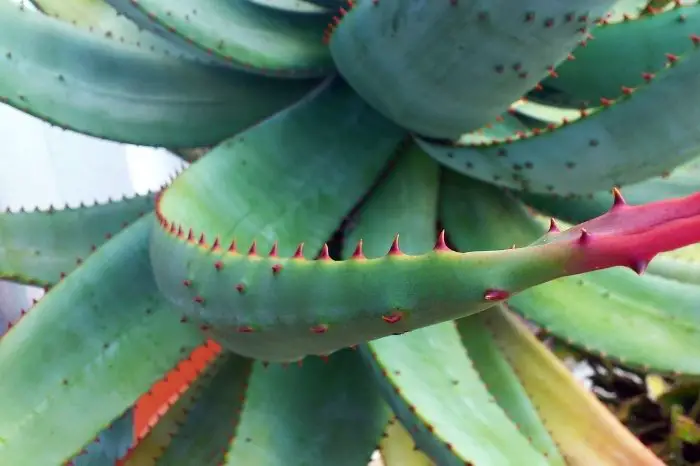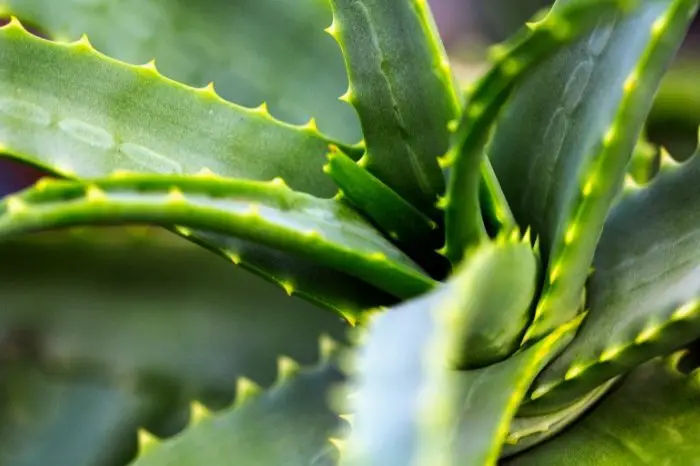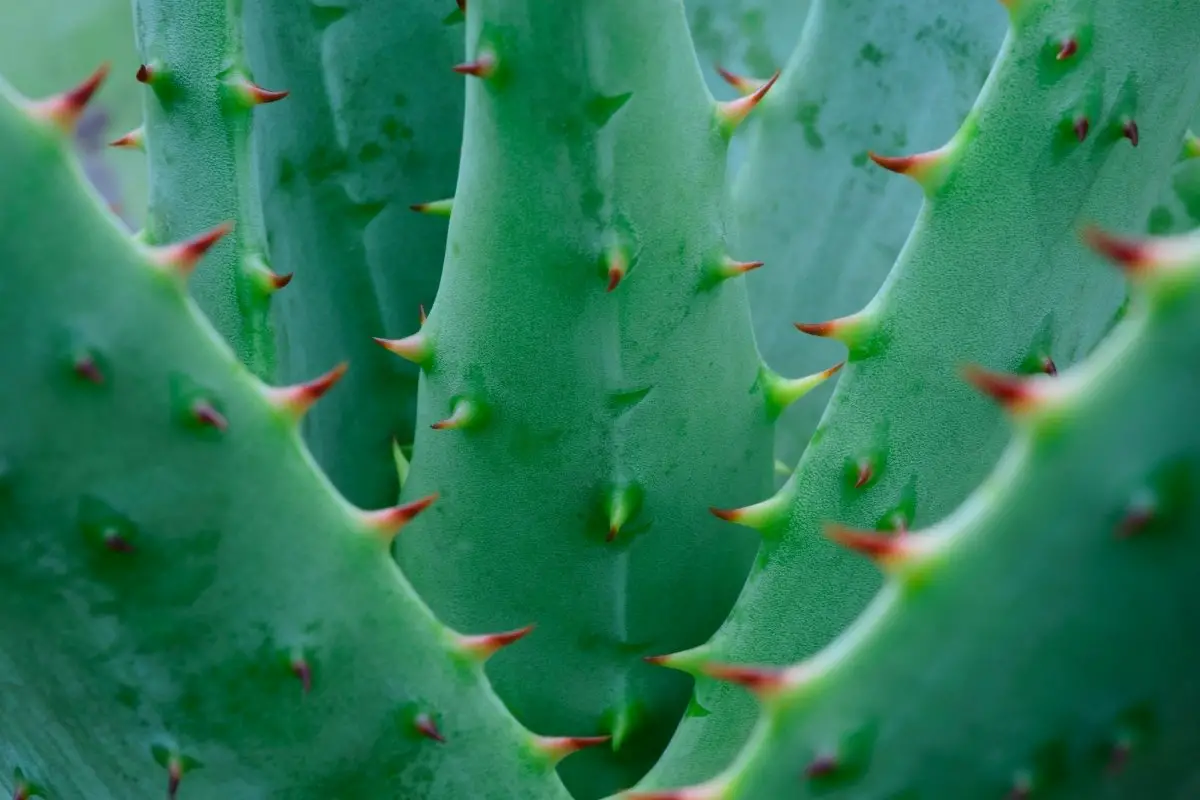Last Updated on May 1, 2022 by Cristina
Aloe is a good plant to have as a houseplant because they are easy to grow and doesn’t require too tedious maintenance. They also have other great benefits and one of them is medicinal uses. But aloe tends to develop spikes and you may often wonder why this is happening. Aloe with spikes is more prominent with older plants.
As simple as the plant of Aloe Vera is in terms of maintenance and all, some gardeners may seem to want to avoid this plant because of its spikes. But the spike present in the aloe plant serves a purpose for this plant.
Aloe with spikes may have you skeptical about if you should have this plant in your home. But what are the reasons why aloe comes with spikes? We will find out the reasons to aloe having spikes soon so let’s begin.
Aloe With Spikes: Reasons For This Spikes
Firstly, you need to be aware that aloe plants that are young or aloe pup does not have spikes. It is when the plant of aloe grows older they begin to grow spikes.
But what are the reasons why aloe tends to have spikes? Aloe with spikes occurs because of two main reasons and these reasons are stated below.

· Prevention Of Water Loss From The Leaves
The plant Aloe Vera is known to be a desert plant that has the ability to thrive in very hot and dry weather. Therefore, aloe plants growing in these extreme conditions need to adapt so they can face the challenging task when it comes to water conservation.
This spike is a way of drastically reducing their leaves to the spine so that little water is lost from the leaves. Hence, you may not notice any spores on the leaves of the Aloe Vera plant. So, the aloe plant has leaves edges that are flat with spikes making it an ideal structure for tolerating these extreme weather conditions.
· Protective Mechanism
Originally, the plant of aloe grows in desert-like places and this type of place has less number of plants or even other living things. This desert is a larger place with plenty of sandy soil and extremely hot climates which makes the place inhabitable for too many places. So, aloe is one of those plants that have the capability to live here.
Even though this seems like a very good quality for aloe plants to be able to live in such extreme places; this kind of place however invites threats from predators.
Aloe being one of those surviving plants in desert-like places makes them an easy target for birds and other animals that tend to thrive on other available in these harsh conditions.
For this reason, Aloe Vera needs to put up a protective mechanism which brings about spikes on its leaves. Hence, these spikes can further deter predators from preying on this plant.
Even if these predators attempt to break the leaves of aloe, they can get bruised by the thorns.
Costa Farms Aloe Vera Live Indoor Plant Ships in Grow Pot, 10-Inch Tall, Green
Types Of Aloe Plants
There are over 500 species of aloe plants and this is according to the World Checklist of Selected Plant Families. But let’s take a look at about 10 of them in this article:
1. Aloe Barbadensis Miller
This specie of aloe is one of the most common types and this is thanks to their healing properties. The gel produced from cutting the aloe leaves can assist in healing burns and also help in other skin and hair problems.
2. Aloe Comosa: Aloe With Red Spikes
This aloe plant species is characterized by succulent thick blades that end with red spikes at their edges. The plant is lined with spiny, tooth-like, brown-red spikes.
3. Aloe Rubroviolacea
Another aloe plant that has red thorns is aloe rubroviolacea and they have these lovely blue-green leaves. Their leaves tend to change to purple in full sun and they grow thick spires of red flowers during winter. This specie of Aloe Vera is pretty much disease-free.
4. Aloe Ferox
This aloe species is also known as Cape Aloe and they are characterized by their brown spines. They tend to give rise to large bright orange flowers.
5. Aloe Aculeate
This aloe plant species is native to South Africa and they are also known as Red Hot Poker Aloe. Their orange-yellow flowers tend to bloom between August and October.
6. Aloe Cameronii
This aloe species is quite popular and this is because of their rich red copper leaves. However, the color the leaves radiate usually depends on exposure to sun and water.
7. Aloe Marlothii
Aloe marlothii leaves can attain a height of up to 5 feet. They also have a broad base tapering to a sharp point. Their leaves spines appear reddish-brown along the edges.
8. Aloe Petricola
This aloe species is common or popular among gardeners enthusiasts and this is because of the radiant colors of their inflorescent and blue-green leaves.
9. Aloe Ciliaris
Aloe ciliaris is a good houseplant that has fine white hairs that grow on the margins of its curved leaves. They have the name climbing aloe due to the rate at which they grow rapidly and they give rise to radiant orange flowers that blooms between November and April.

10. Aloe Aristata
Their aloe leaves are pale green in shade but they often turn dark green when exposed to full sunlight. This aloe plant has incurved leaves that have tufted tips that are lined with white teeth along their edges.
Then there is a clump formation and it grows red-orange flower during winter. Aloe aristata thrives well in partial shade.
Final Say
Aloe plants are generally lovely houseplants that you can add to your collection of plants. Aloe with spikes is just a way of how the plant adapts to its environment. The spikes of aloe are not poisonous but you should take care whenever you handle the plant so it does not poke you.
FAQ’s
Does aloe have spikes?
Aloe plants certainly have spikes that are sharp and they spines are found on the edges of their leaves. These spikes are not so harmful or poisonous; but notwithstanding, you should still take care when you handle the plant.
What is the thing growing out of my aloe plant?
The things you see growing out of your aloe plant is known as thorns or spikes. These spikes helps the plant conserve water during very dry season.

Eunice is a gardener who loves to play in the dirt. She starts her day early in the morning, watering her plants and tending to her garden. She loves the smell of freshly cut grass and the feeling of sunshine on her back as she works. She‘s a master at creating beautiful flower arrangements and can often be found humming a tune as she tends to her plants. When she‘s not gardening, she loves to read books about nature and share her knowledge with others. Eunice loves gardening so much that she‘s even been known to talk to her plants!


